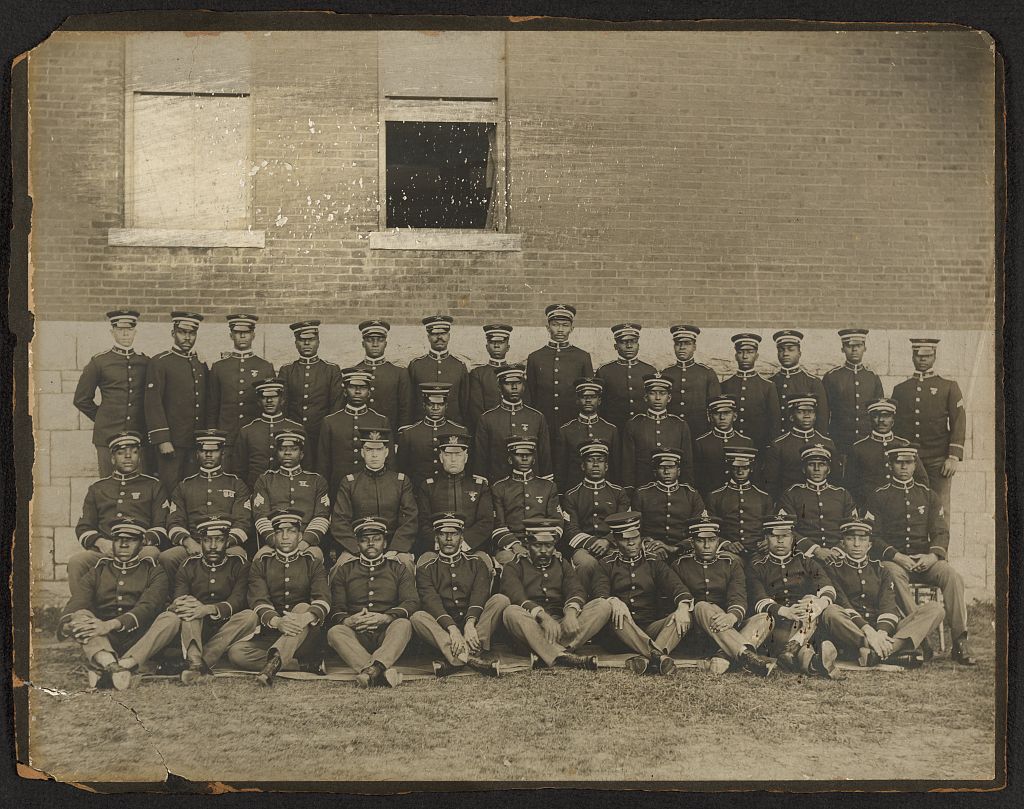Philippine-American War and the Buffalo Soldiers
By Sofie Barrett
After the Spanish defeat in the Spanish-American War, Spain relinquished control of the Philippine Islands to the United States with the Treaty of Paris in December of 1898. The treaty called for America to pay Spain a lump sum for the islands. After the treaty was ratified, fighting broke out in the islands between the US forces and Filipino nationalists. Led by Emilio Aguinaldo, Filipino nationalists had been fighting Spain to be free of Spanish rule and rejected American rule. The fighting sparked the beginning of the Philippine-American War which occurred from 1899 to 1902; a brutal three-year war that resulted in thousands of deaths on both sides.1
Initially, Army officials expressed concerns that black soldiers might reject their combat roles because they would be fighting an oppressed minority. Many black newspapers and leaders supported Filipino independence and felt black soldiers would be used in an unjust racial war. Nevertheless, the first wave of black troops arrived in the Philippines in mid-July of 1899 with the Twenty-fourth and Twenty-fifth Infantry.2
In the Fall of 1899, the War Department created two additional black volunteer units, the Forty-eighth and Forty-ninth US Volunteer Infantry to serve in the war. These units consisted of mostly inexperienced recruits who served from July 1900 to 1901. These regiments also had black officers; some of who had served in Buffalo Soldier units.3
Members of the Ninth and Tenth Cavalry, Twenty-fourth and Twenty-fifth Infantry and Forty-eighth and Forty-ninth US Volunteer Infantry served in the Philippines. The soldiers guarded small villages and military bases to maintain peace in various towns. These men did not fight pitched battle; instead they scouted and hunted down small insurgent groups.4
While most black soldiers remained loyal, about fifteen to thirty Buffalo soldiers deserted, some joined the Filipino rebels in attacking the Americans. Among them, the infamous Private David Fagen, a former member of the Twenty-fourth Infantry, became a captain in Philippine Army and caused trouble for the US Army until his death.5
The capture of Aguinaldo in 1901 left Filipino rebels floundering into the spring of 1902. By this time, most of the Filipino resistance groups had dispersed. President Theodore Roosevelt declared the war over on July 4, 1902 and with that proclamation the last of the black troops left the Philippines. Some returned later. The isles were deemed an autonomous commonwealth in 1935 and the US granted independence in 1946 after Filipinos survived the Japanese occupation of World War II. Again, Filipinos partook in guerilla activity; this time in cooperation with American troops and their allies.6
Endnotes
1 “The Philippine-American War, 1899–1902,” Department of State, accessed August 08, 2019, https://history.state.gov/milestones/1899-1913/war; Treaty of Peace between the United States of America and the Kingdom of Spain, December 10, 1898, United States Statues at Large 30 (1898): 1754.; "The Philippine War- A Conflict of Conscience for African Americans," National Parks Service, February 28, 2015, accessed August 08, 2019, https://www.nps.gov/prsf/learn/historyculture/the-philippine-insurrectiothe-philippine-war-a-conflict-of-consciencen-a-war-of-controversy.htm; Brian McAllister Linn, The Philippine War: 1899-1902 (Lawrence, KS: University Press of Kansas, 2000).
2 Willard B. Gatewood, “Smoked Yankees” and the Struggle for Empire: Letters from Negro Soldiers, 1898-1902 (Urbana, IL: University of Illinois Press, 1971), 240; “The Philippine-American War, 1899–1902,” Department of State..
3 Gatewood, “Smoked Yankees,” 240.
4 Gatewood, “Smoked Yankees,” 239-244;
5 “The Philippine-American War, 1899–1902,” Department of State; Gatewood, “Smoked Yankees,” 15; Michael Morey, Fagen: An African American Renegade in the Philippine-American War (Madison, WI: University of Wisconsin Press, 2019), passim.
6 Gatewood, “Smoked Yankees,” 15; “The Philippine-American War, 1899–1902,” Department of State; Satoshi Nakano, “In the Language of the Occupier: Recent Work on the Japanese Period in the Philippines,” Social Science Japan Journal 2, no. 2 (October 1999): 267-72, http://www.jstor.org/stable/30209634.
© 2019, University of Central Florida



